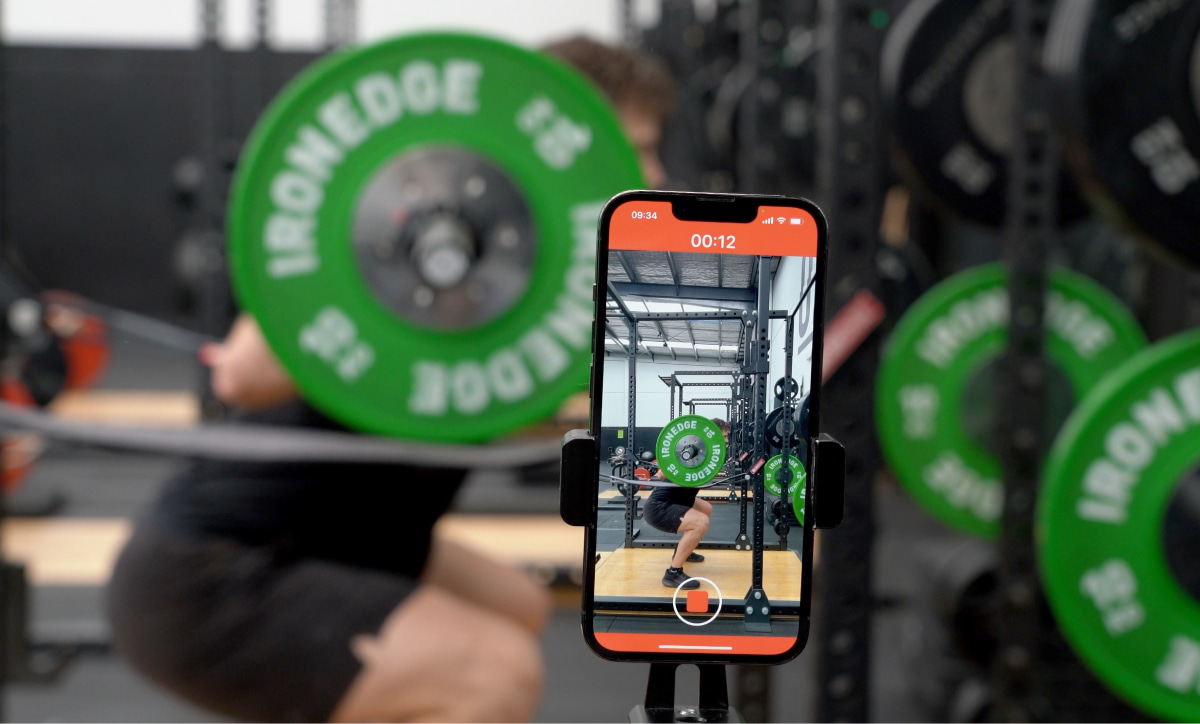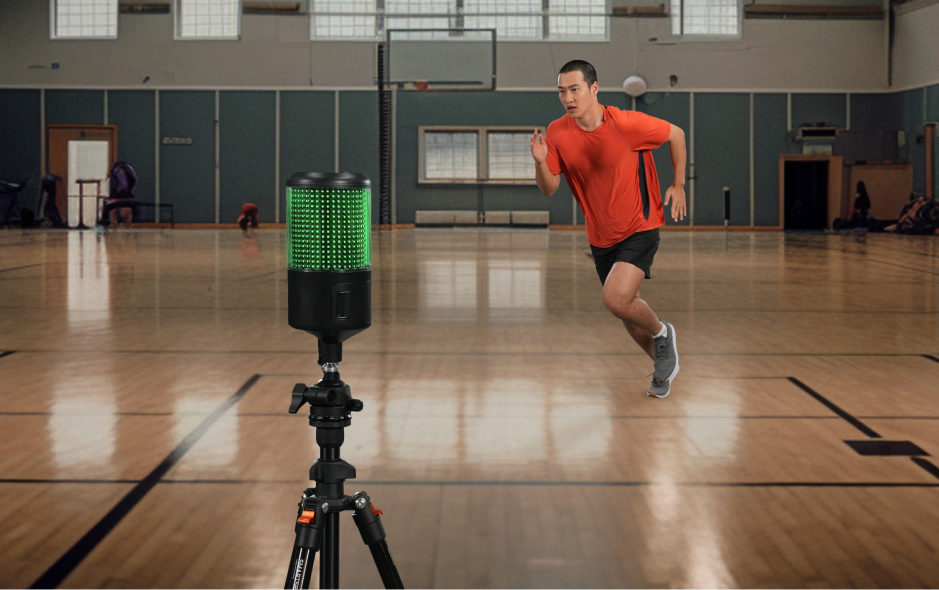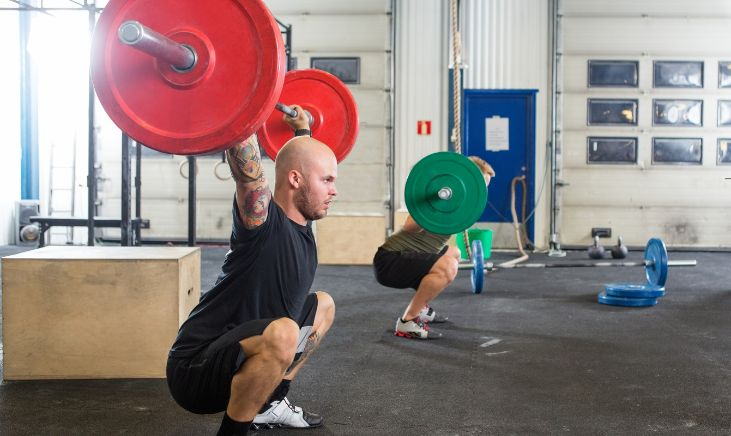Velocity-based training incorporates using technology to measure and calculate objective data to establish a customizable approach to programming. This allows for a greater capacity for athletes to accomplish progress and achieve desired results thanks to a uniquely catered approach to training.
What is Velocity-Based Training?
Before we unlock the potential of velocity-based training in Olympic athletes, it’s vital to understand what this form of training is.
Velocity-based training (VBT) is a method of training that uses a piece of technology to track the movement speed of the exercise. A VBT device measures movement or bar velocity during exercise. The device’s feedback provides information on performance that the coach and lifter can use. By measuring velocity, VBT gives a precise and objective metric to incorporate more remarkable achievements in training progress.
Who Can Benefit From Velocity-Based Training?
Strength and conditioning coaches and lifters can benefit from velocity-based training, as VBT and related tools can better objectively calculate load and progress in the gym and, therefore, in respective sports.
Though 1RM (rep max) is a common way to assess appropriate weight load, utilizing a prescribed velocity for that specific day can better determine an appropriate load versus clocking a designated 1RM. Incorporating a prescribed velocity will automatically assign an individual an appropriate load to lift for that day (2).
Whether an Olympic athlete or a weightlifting fanatic, velocity-based training is an effective tool that can provide immediate feedback on performance and accurately adjust training for the day to promote progress over injury.

What Kinds of Exercises Can Velocity-Based Training Be Used With?
Velocity-based training can be incorporated with various exercises, including the bench press and Olympic lifts. However, not all exercises will benefit from velocity-based training, like many bodyweight exercises often used in core stability or yoga.
Many CrossFit and Olympic exercises, like the snatch and barbell row, can benefit from velocity-based training. Integrating these exercises into these lifter’s routines can allow these athletes to improve velocity, power, and overall performance. This gives these athletes the opportunity to achieve new heights in their careers, helping them reach short and long-term goals with greater efficiency and continuous progress.
VBT Exercise Examples:
- Bench press
- Squat
- Jump squat
- Pull-up
- Deadlift
- Military Press
- Clean
The Benefits of Velocity-Based Training

Velocity-based training has many impressive benefits. It can help:
- Provide Immediate Feedback
- Reduce the Risk of Injury
- Increase Athletic Performance Progress
- Allow For More Customized Programming
Provides Immediate Feedback
One of the great qualities of VBT is that it provides immediate feedback. This allows for a quicker shift into a more targeted and refined workout session. A coach or athlete can use a tool such as this to quickly change up a program if necessary to optimize time in the gym, working on things that will be most effective that day.
The immediate feedback also saves the lifter time from experiencing training plateaus by constantly helping shape their training routine to produce continuous results. Without the input, a lifter may not know how that session is going and may have to depend on more objective methods, like rate of perceived exhaustion (RPE). The VBT provides more accurate feedback for the lifter to go off and better assimilate their training routine.
Reduced Risk of Injury
Thanks to the immediate feedback provided by velocity-based training, the risk of injury can be drastically reduced. The ability to better calculate what the body can effectively take on for that specific day can prevent overtraining and even undertraining by aligning that day’s session to the appropriate intensity.
Progress in Athletic Performance
Velocity-based training is a spectacular tool used in coaching and lifting that can promote outstanding progress in exercise and athletic performance.
Thanks to its immediate feedback, VBT training enables a more unique approach by enabling measurements customized to the individual lifter. This allows the day’s lift to be adjusted to the appropriate intensity so the lifter can more accurately train to achieve sought-after goals. As a whole, this form of training can help lifters improve performance, strength, and much more to establish stunning results in their training routine.
Customized Training
Based on velocity-based training’s capacity to accurately measure and provide real-time feedback, coaches can give lifters a more customized training routine to allow for better progress. The insights discovered from a training day with VBT can allow coaches to develop a more unique training program customized to each lifter. This allows for more significant opportunities for each lifter to grow in their strengths and address their weaknesses.
Velocity-based training allows for greater progress than a cookie-cutter program because it can create highly customized training for each individual.

How to Achieve Results with Velocity-Based Training
Other tools and methods can promote even greater results alongside velocity-based training. From linear encoders to velocity drop-offs, continue reading to learn more about achieving exceptional results with velocity-based training!
Use Linear Encoders to Measure Progress
Velocity-based training incorporates linear encoders to provide real-time feedback and measurements.
Linear encoders measure an exercise’s velocity to provide feedback and information on the intensity of the training. The information given by linear encoders considers the time and amount of space in which the lifter moves during an exercise to calculate and provide immediate feedback on performance.
Using this tool during velocity-based training gives us the opportunity to analyze data and a customize program based on that data to better account for strengths and weaknesses of each individual.
Monitor Development
As with any goal-based training, monitoring development is vital to ensuring a steady path to success.
Assessing training progress helps evaluate any potential issues or concerns that may arise with training. Whether overworking a muscle group and raising the risk of a muscle strain or evaluating if progress is continuous or plateauing, monitoring progress as time goes on allows for re-evaluation and re-planning a program if need be.
Taking time to do this can be extremely beneficial in the long run. It empowers more chances for growth and success in the trial-and-error process that should be expected in fitness and exercise, as each individual body is different and reacts uniquely.
Incorporate Velocity Drop-Offs
While exercising, fatigue is experienced as the body loses energy, and this is no exception during velocity training. As fatigue ensues, velocity decreases.
Knowing this, research has established what is called the “velocity drop-off” or “velocity loss” to better measure volume and manage fatigue in exercise (3). Doing so allows for more significant improvements when feedback after each repetition is provided to account for fatigue.
This also aligns with the differences in athletes and applying a more customizable approach to training. Each individual is different. For example, comparing an endurance and strength-based athlete, the rate of fatigue is vastly unique. The strength-based athlete will more than likely fatigue faster than the endurance athlete, so with velocity drop-offs, this is taken into consideration for a more distinctive and effective training approach.
Establish a Load Velocity Profile
Also known as a force-velocity profile, a load-velocity profile is a productive mapping tool that utilizes an individual’s maximal lifting speeds taken at a range of loads. A load-velocity profile helps determine an athlete’s current physical capability for a workout session. This function presents a more accurate training program prescription.
Prioritize Autoregulation
Autoregulation is a type of resistance training style used to adjust various training variables depending on the individual’s daily fluctuations in performance (1). These variables are influenced by exercise-induced fatigue and other non-training stressors that may arise.
This method can also be incorporated into velocity-based training by measuring velocity in an athlete’s standard warm-up. If the athlete’s velocity for the prescribed load is lower than the average velocity from the past few weeks, this means the athlete’s daily readiness is below average. Taking this into account, the intensity and volume of the day’s workout program should be therefore decreased.
Final Thoughts
All in all, velocity-based training is an effective tool that should be incorporated to establish more effective exercise programs catered to each respective individual.
Numerous tools and methods, like establishing a load velocity profile, can promote greater effectiveness when using velocity-based training. This training style and these methods can achieve great results for all levels of athletes, from Olympians to your average gym warrior looking to reach new heights in their exercise and athletic performance.
References
- Larsen, S., Kristiansen, E., & van den Tillaar, R. (2021, January 12). Effects of subjective and objective autoregulation methods for intensity and volume on enhancing maximal strength during resistance-training interventions: A systematic review. PeerJ.
- Mann, B. (n.d.). Velocity-based training. NCAA.org. https://www.ncaa.org/sports/2015/5/20/velocity-based-training.aspx
- Weakley J, Till K, Sampson J, et al. The effects of augmented feedback on sprint, jump, and strength adaptations in Rugby union players following a four-week training programme. Int J Sport Phys Perf 14: 1205–1211, 2019.







